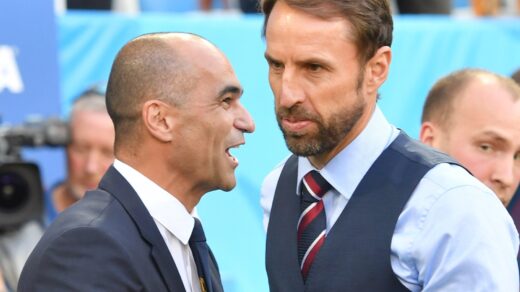Liverpool and Wolverhampton Wanderers played out a 2-2 draw in the third round of the FA Cup at Anfield, but there were two controversial offside decisions. This is what happened.
Goal disallowed: Nunes offside on Toti goal
What happened: In the 81st minute, Toti thought he had scored the winning goal for Wolves, but the assistant raised his flag for offside.
VAR decision: Offside stands.
0:58
Hwang Hee-Chan scores, but the goal is disallowed by VAR.
VAR review: This was a decision which confused most fans, because there was no offside in the directly before Toti scored. So why did the flag go up?
The move began with a corner taken by Matheus Nunes. After the delivery into the box, the last attacking touch was by Hwang Hee-Chan — this sets the offside phase. Nunes was the next player to receive the ball. The assistant delayed his flag and raised it after the goal was scored, as he judged Nunes was in an offside position running back to receive the ball from taking the corner.
That the ball was headed backwards by Hwang is irrelevant for an offside decision. Thiago‘s attempted clearance also does not reset the phase.
But there were no cameras calibrated for offside that showed the position of Nunes and the last defender when Hwang heads the ball. The only camera which showed both players was a high tactical camera which isn’t calibrated, and there was no definitive proof to be able to overturn the on-field decision.

With semi-automated offside technology, where every player is tracked, this wouldn’t happen.
It’s incredibly unfortunate for Wolves, but even the images being shared on social media show no evidence that Nunes was onside — not that the VAR would have had access to these anyway.
The lack of clarity for everyone watching, however, further underlines the problems around communication and VAR.
We saw a similar incident earlier this season when Gabriel Martinelli‘s goal for Arsenal against Liverpool had to stand as the VAR could not use a calibrated camera to make a decision on an offside position for Bukayo Saka.
The worst example came in Serie A in September, when Juventus had an injury-time winner disallowed by the VAR for an offside on a corner routine — but there was a Salernitana defender playing everyone onside by the corner flag that the VAR couldn’t see on the replays available. In this instance, the VAR wrongly became involved in the game to change a correct decision which cost Juve two points.
Possible offside: Salah when scoring
What happened: Liverpool took the lead in the 52nd minute when Cody Gakpo tried to find Mohamed Salah with a ball over the top. Toti made a failed attempt to clear with a header and Salah collected the loose ball to score. But should there have been an offside?
VAR decision: Goal stands.
0:47
Mohamed Salah settles the ball and slots it past the keeper to give Liverpool a 2-1 lead.
VAR review: It’s a controversial decision, and goes right to the heart of what is a “deliberate play” by a defender. There is no doubt Salah is in an offside position, but if the officials judge Toti’s actions to be a “deliberate play”, Salah cannot be penalised or offside.
In short, a “deliberate play” only applies when a defender has control over where the ball goes. There are many factors which are taken into account, and an attempted header is judged more in favour of the defender than a kick. This is because there is, generally, less control in heading a ball.
If a defender has to stretch or jump to head the ball, this is an extra layer for determining that it’s not a “deliberate play”.
Dean decided not to intervene in the on-field decision to allow the goal. However. we are likely to see similar instances where a goal is disallowed.
It’s a hugely subjective area of offside, and Wolves can consider themselves very unfortunate to have conceded this goal too.



